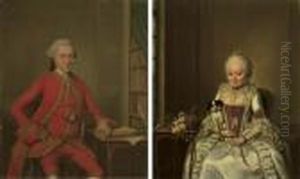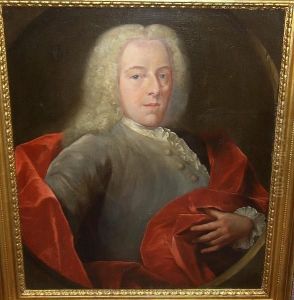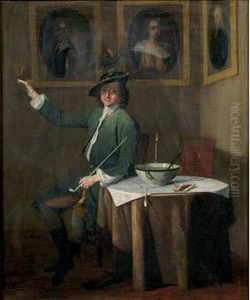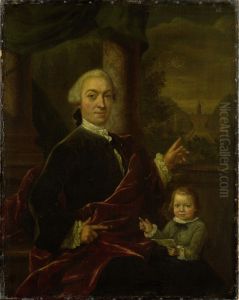Jan Maurits Quinkhard Paintings
Jan Maurits Quinkhard was a Dutch painter and engraver born in Rees (now Germany) in 1688. He is primarily known for his portraits, which earned him significant recognition in the Dutch Republic during the 18th century. Quinkhard's artistic journey began under the guidance of his father, Juriaan Quinkhard, a modest painter himself, who was the first to teach him the basics of painting.
After his initial training, Quinkhard sought to refine his skills and expand his artistic knowledge. He traveled to Amsterdam, where he became a pupil of Arnold Boonen, a well-known portrait painter of that time. Under Boonen's mentorship, Quinkhard honed his skill in capturing the likeness and personality of his subjects, which became a hallmark of his later work. His dedication to art and his growing expertise in portraiture soon brought him into the limelight.
Quinkhard's reputation as a portraitist grew, and he received commissions from many notable figures in Dutch society, including members of the aristocracy, academics, and merchants. His portraits were appreciated for their detail, composition, and the ability to capture the essence of the sitter. Beyond portraiture, Quinkhard also explored other genres, including historical scenes and genre paintings, but these works did not gain the same level of acclaim as his portrait work.
In 1715, Quinkhard became a member of the Amsterdam Guild of St. Luke, a testament to his standing in the art community. His involvement with the Guild further solidified his reputation and provided him with a network of artists and patrons. Throughout his career, Quinkhard also engaged in engraving, which allowed him to reproduce his works and reach a wider audience.
Jan Maurits Quinkhard's contribution to Dutch art was significant, especially in the realm of portraiture, where his works served as a bridge between the late Baroque and the early Enlightenment periods. His ability to capture the spirit and individuality of his sitters left a lasting mark on the Dutch portrait tradition. Quinkhard passed away in Amsterdam in 1772, leaving behind a legacy that continued to influence Dutch portraiture for years to come.
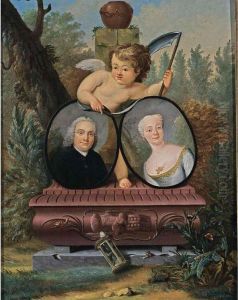








![Ritratto Di Cinque Gentiluomini, Probabilmente Governatori Di Una Gilda, Seduti Intorno A Un Tavolo Coperto Da Un Tappeto[oil Of Canvas]](https://www.niceartgallery.com/imgs/919460/s/jan-maurits-quinkhard-ritratto-di-cinque-gentiluomini-probabilmente-governatori-di-una-gilda-seduti-intorno-a-un-tavolo-coperto-da-un-tappetooil-of-canvas-486f87a4.jpg)
